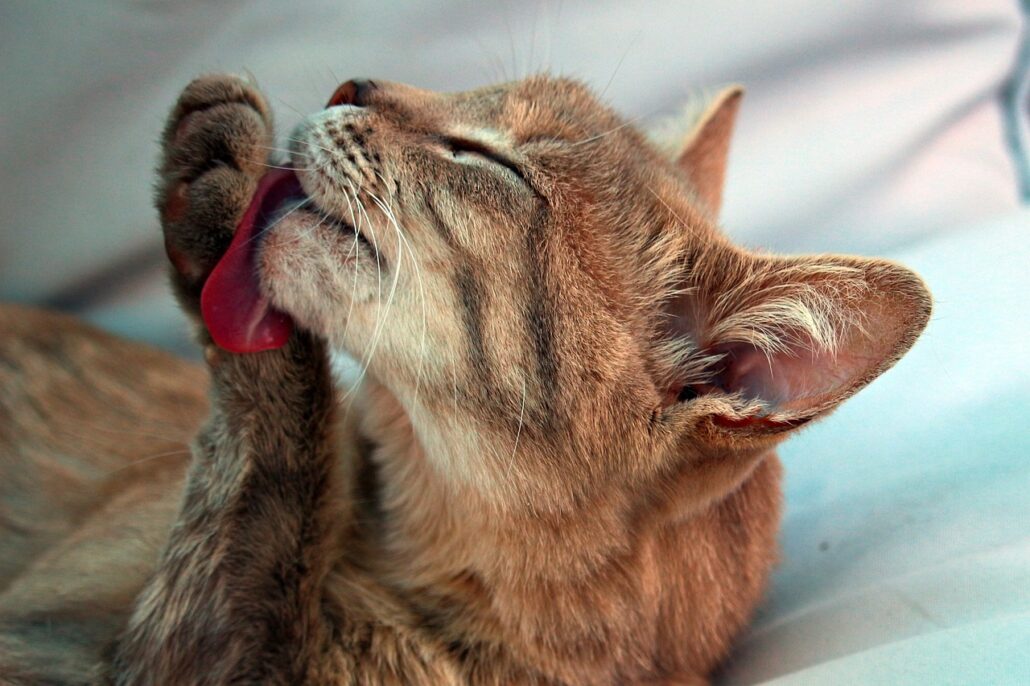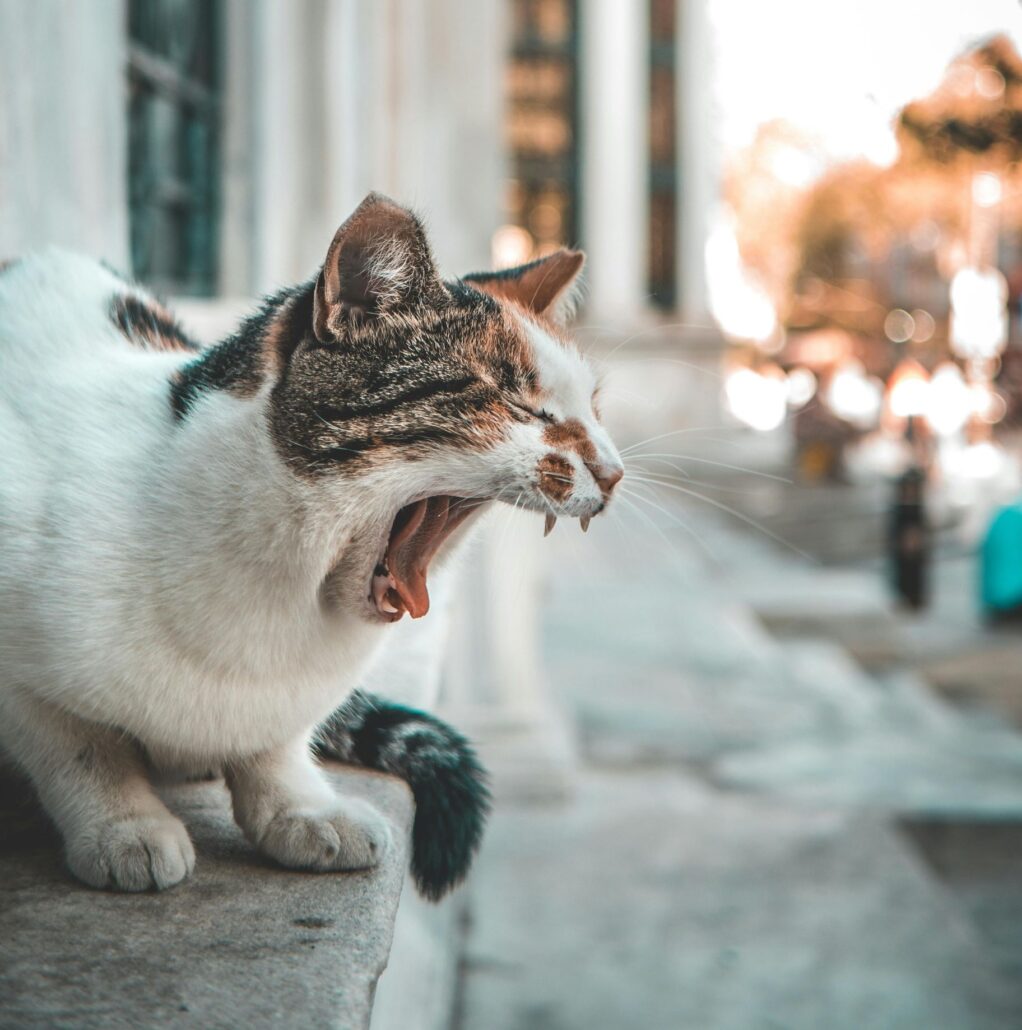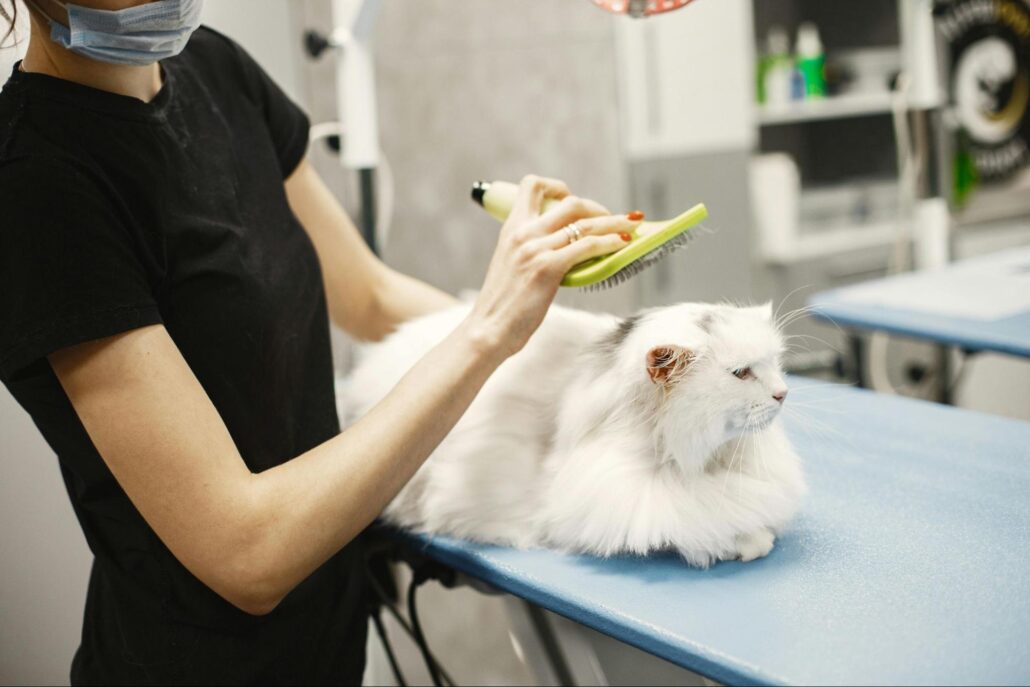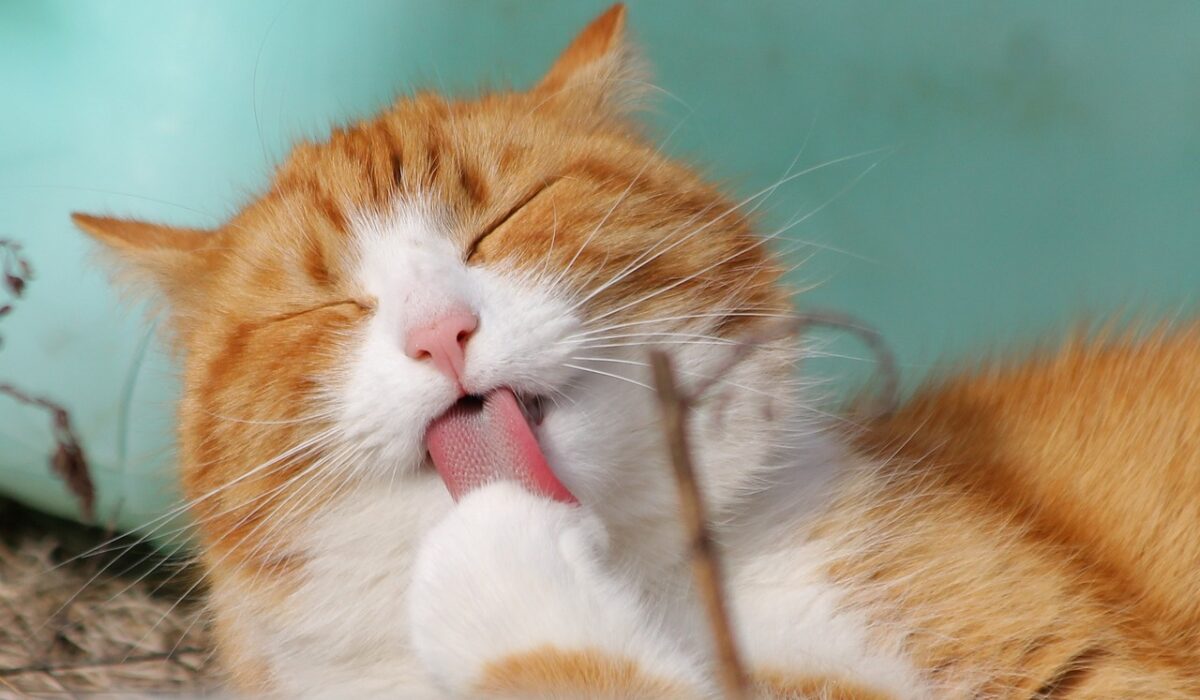Why Do Cats Get Hairballs (And What to Do About Them)
Let’s talk about hairballs and why your cat gets them—because all cats have to deal with too much fur sometimes.
Hairball prevention is a natural part of cat care. For the most part, your cat will groom themselves and remove excess fur using their sandpaper-like tongue. But too much hair can lead to hairballs, which you might find on the floor, your favorite armchair, or in a basket of freshly washed clothes.
As much as you love your cat, you don’t want wet balls of hair in inconvenient places. And more importantly, you also don’t want to put your pet’s health at risk—which hairballs can totally do.
Here’s a closer look at what hairballs are, how they form, and how you can prevent them to keep your kitty purr-fectly happy.
What Is a Hairball, Exactly?
A hairball is exactly what it sounds like—a round or elongated ball of fur your cat accumulates from licking and grooming itself. These hairballs are ingested and then regurgitated because your cat can’t digest keratin, the main protein in hair.
The result is a wet, sticky, clumpy mess of hair that’s not much different from vomit.

Why Does My Cat Get So Many Hairballs?
A weekly hairball is a natural part of a cat’s self-grooming. With all that licking and fur removal, the fur has to go somewhere. Your cat swallows pretty much all of the hair they remove with their barb-like tongue. Too much hair in the stomach at once can lead to bigger hairballs, which are harder for your cat’s digestive system to move. So it exits the same way it enters—through your cat’s mouth.
However, some cats may get more hairballs than others due to several factors:
- Time of year
- Breed
- Age
Your cat may shed more at times than others, which means they’re swallowing more hair. And living in a warmer area like Los Angeles, for example, your cat may start shedding earlier in the season and experience hairballs more frequently.
If you have a long-haired cat, like a Maine Coon or a Persian, you might see more hairballs compared to short-hair cats. Even if they’re not grooming themselves more often, the longer hair accumulates faster and can lead to more hairballs.
Also, you might notice more hairballs as your cat gets older. Adult cats are more skilled at removing dead or loose fur, so they’re naturally more inclined to get hairballs. Senior cats also have slower digestive systems, which may cause them to produce more hairballs.

The Dangers of Hairballs for Cats
These little furry “presents” your cat leaves behind might seem harmless because they’re natural. But they can actually pose some serious dangers to your fur baby.
Hairballs can cause blockages in your cat’s digestive system, making them uncomfortable and causing potential health problems. Hairballs that grow too large can be difficult to cough up or pass through the digestive system. In some cases, hairballs get stuck in the intestine and will require laxatives or surgery to remove.
Hairballs can also be a sign of underlying conditions, such as anxiety, digestive disorders, kidney disease, or dental problems. For example, excessive grooming resulting in frequent hairballs could indicate your feline friend is nervous or anxious. You might need to investigate what’s causing their behavior and help them find their inner zen (or let your vet take the lead).
How to Know if Your Cat Has a Hairball
Cats don’t always show signs of hairballs, but there are a few ways you can tell if they might be dealing with one.
One sign is excessive grooming. If they’re licking themselves more than usual, a hairball is likely to follow.
A more “in the moment” sign is retching or gagging. This is the moment right before they expel that mashed-up wad of hair. You might hear dry heaving or hacking sounds as they try to rid themselves of their excess hair (for the second time).
In some cases, your cat might be struggling with hairballs. Let your vet know if your cat has any of the following symptoms:
- Lethargy
- A lack of appetite
- Diarrhea
- Constipation
- Hacking or retching but no hairball
These signs might indicate a hairball is stuck and needs veterinary intervention.

How to Prevent Hairballs
While hairballs are perfectly natural, they’re also unpleasant for you and your cat. You can help reduce their hairball episodes with these tips:
- Regularly brush your cat to remove excess hair and prevent hairballs from forming.
- Provide a balanced diet with lots of fiber for better digestion.
- Use hairball-specific food formulas as recommended by your vet.
- Keep your cat hydrated all day long with plenty of fresh water.
- Add omega-3 fatty acids to your cat’s diet to promote healthy fur growth and lubricate the digestive tract.
- Get routine professional cat grooming to maintain a healthy coat.
Ask your vet for other recommendations, especially if your cat has been treated for hairballs before.
Get Purr-Fect Grooming from Kitty Spaw to Prevent Hairballs
Cats are naturally good groomers, but even with years of practice, they can still get hairballs (and leave their messes behind). Kitty Spaw’s Certified Feline Master Groomer can help keep your fur baby looking and feeling their best.
From luxury baths to brushing and skin care, our team will help you give your furry feline the royal treatment. We can check for problem areas that might be causing repeat issues, eliminate fur knots that might encourage excessive grooming, and neatly trim your cat’s fur as needed to reduce hair intake.
Reach out to Kitty Spaw today to learn more about our professional cat grooming services or to schedule an appointment.



